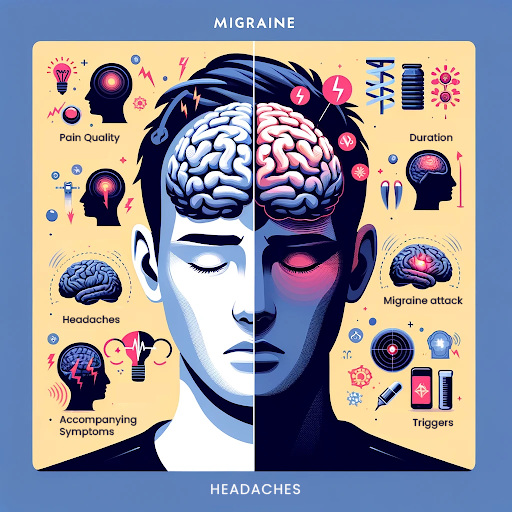- The Health League
- 0 Comments
Headaches are a common ailment, affecting millions of people worldwide. However, not all headaches are created equal. Migraines, a specific type of headache, are often misunderstood as just another headache. This misconception can lead to mismanagement and unnecessary suffering. In this post, we’ll dive into the differences between migraines and headaches, helping you understand each condition better and guiding you toward the right treatment pathway.
Understanding Headaches
Headaches, in general, are pain in any region of the head. They can vary in intensity, duration, and cause. Most people experience what are known as tension-type headaches, which are often linked to stress, muscle strain, or anxiety. These headaches are characterized by a dull, aching sensation, often accompanied by a feeling of pressure across the forehead or on the back and sides of the head.The Migraine Difference
Migraines, on the other hand, are not just severe headaches. They are a neurological or vascular condition characterized by intense, debilitating pain, typically on one side of the head. Unlike tension headaches, migraines can be accompanied by a range of symptoms, including nausea, vomiting, and sensitivity to light and sound. Some individuals experience auras, which are visual or sensory disturbances that precede the migraine attack, such as flashes of light, blind spots, or tinglingKey Differences
- Pain Quality: The pain from a migraine is often described as pulsating or throbbing, while tension headaches usually cause a constant, dull ache.
- Accompanying Symptoms: Migraines often accompany nausea, vomiting, and sensitivity to light and sound. Tension headaches do not typically cause these additional symptoms.
- Duration: Migraines can last from 4 hours to 3 days if untreated. Tension headaches usually last between 30 minutes and several hours.
- Triggers: Migraines can be triggered by a variety of factors, including certain foods, stress, hormonal changes, or environmental changes. Tension headaches are more commonly triggered by stress, muscle strain, or anxiety.
